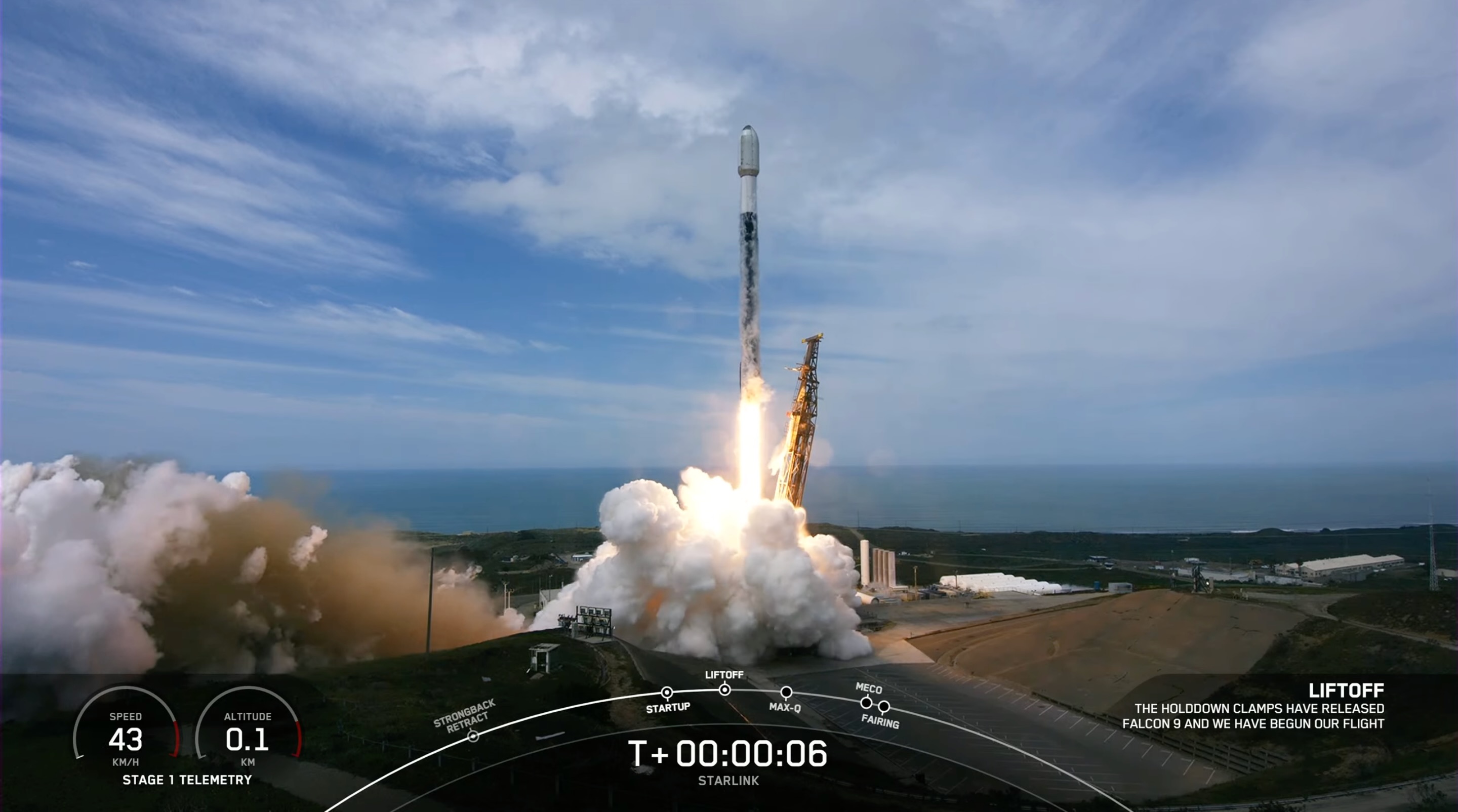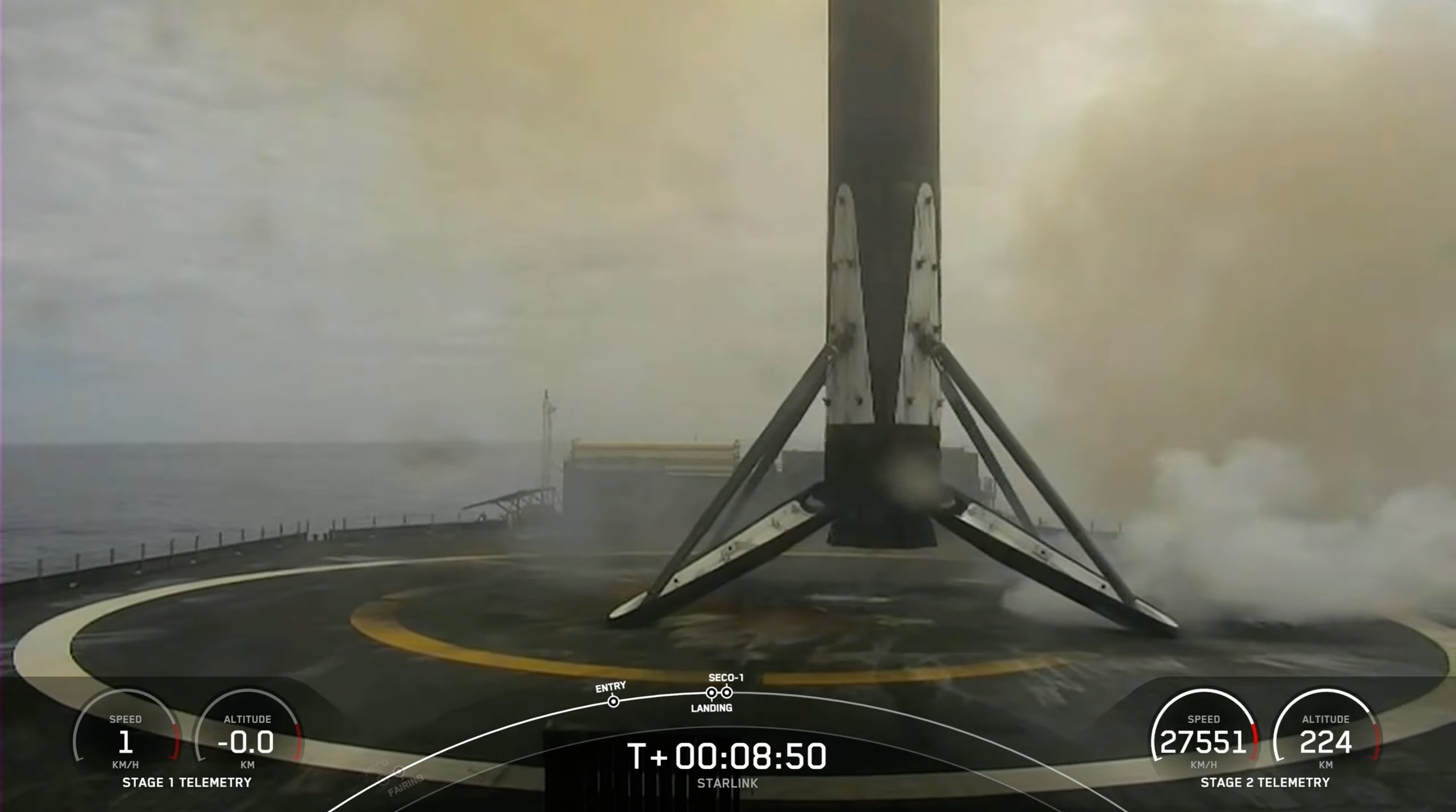The first half of SpaceX's St. Patrick's Day doubleheader went well.
The company aced its 18th orbital mission of 2023 on Friday (March 17), launching 52 of its Starlink internet satellites to orbit and landing a rocket on a ship at sea.
A Falcon 9 rocket carrying the broadband craft lifted off from California's Vandenberg Space Force Base at 3:26 p.m. EDT (1926 GMT; 12:26 p.m. local California time).
Related: 8 ways that SpaceX has transformed spaceflight

Just under nine minutes later, the Falcon 9's first stage came back to Earth for a pinpoint touchdown on the SpaceX droneship Of Course I Still Love You, which was stationed in the Pacific Ocean. It was the eighth mission for this particular booster, SpaceX wrote in a mission description.
The rocket's upper stage, meanwhile, continued hauling the Starlink spacecraft to low Earth orbit, deploying all of them as planned about 15.5 minutes after liftoff, SpaceX confirmed via Twitter.
The newly launched satellites are joining more than 3,700 operational spacecraft in SpaceX's Starlink megaconstellation. And that number will continue growing far into the future: SpaceX has approval to deploy 12,000 Starlink satellites and has applied for permission for another 30,000 on top of that.
Get the Space.com Newsletter
Breaking space news, the latest updates on rocket launches, skywatching events and more!

SpaceX has one more mission on tap today: Another Falcon 9 is scheduled to launch the SES-18 and SES-19 telecommunications satellites to orbit from Cape Canaveral Space Force Station at 7:38 p.m. EDT (2338 GMT).
You can watch it here at Space.com, courtesy of SpaceX, or directly via the company. Coverage is expected to begin about 15 minutes before liftoff.
Mike Wall is the author of "Out There" (Grand Central Publishing, 2018; illustrated by Karl Tate), a book about the search for alien life. Follow him on Twitter @michaeldwall. Follow us on Twitter @Spacedotcom or on Facebook.
Join our Space Forums to keep talking space on the latest missions, night sky and more! And if you have a news tip, correction or comment, let us know at: community@space.com.

Michael Wall is a Senior Space Writer with Space.com and joined the team in 2010. He primarily covers exoplanets, spaceflight and military space, but has been known to dabble in the space art beat. His book about the search for alien life, "Out There," was published on Nov. 13, 2018. Before becoming a science writer, Michael worked as a herpetologist and wildlife biologist. He has a Ph.D. in evolutionary biology from the University of Sydney, Australia, a bachelor's degree from the University of Arizona, and a graduate certificate in science writing from the University of California, Santa Cruz. To find out what his latest project is, you can follow Michael on Twitter.
-
iMaxPlanck Perhaps I'm missing some of the value of Starlink to human advancement and space exploration (if so, I'm all ears!) but I can't shake the thought that the "Starlink megaconstellation" is already marring the night skies for astronomers wanting to study actual, natural constellations. What will it look like after they add another 30,000 (!!) satellites and how will it impede more productive endeavors at and beyond the outer atmosphere? All humanity gets in return is super-fast global internet? 🤔Reply
I've seen plenty of photos of Starlink and have a hard time seeing it as anything other than Elon Musk's sprawling celestial wi-fi router. Welcoming more informed inputs from the community here so i don't feel like such a Space Karen.









